
views
Brainstorming Ideas for the Tanka

Focus on a scene in nature. Tanka poems are similar to haikus in that their subject matter is usually about nature and the natural world. Think of a scene in nature that you find beautiful, stunning, or powerful. Pick an animal or plant in nature that you find inspiring. To get inspiration for the poem, you can also go for a walk outside in a natural area like a park or a garden. You can also look at nature images online to get ideas for the poem.

Write about an emotion like desire, love, or sadness. Tanka poems can also focus on strong emotions, and your experience of that emotion. Think of a moment where you felt strong desire or love for someone. Write about an experience where you felt sadness or despair. For example, you may write about the sadness you felt when you failed a test. Or you may write about the desire you feel for a lover or a romantic partner in your life.

Read examples of a tanka poem. To get a better sense of the form, read examples of tanka poems online or in poetry anthologies at your local library. You may read: “Three Haiku, Two Tanka” by Philip Appleman Shells in the Sand by Gerard John Conforti Tanka poetry by Hiroko Seki
Creating a Draft of the Tanka
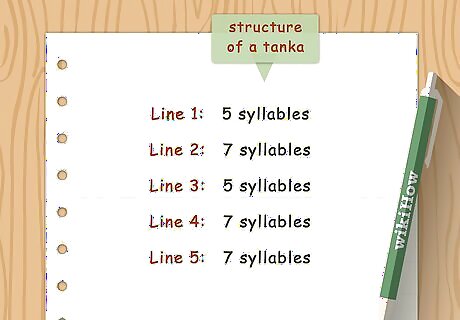
Follow the line and syllable structure of a tanka poem. A tanka poem is five lines long. It follows a set syllable pattern of five and seven syllables, similar to a haiku. The structure of a tanka poem is: Line 1: 5 syllables Line 2: 7 syllables Line 3: 5 syllables Line 4: 7 syllables Line 5: 7 syllables Tanka poems do not use any punctuation.
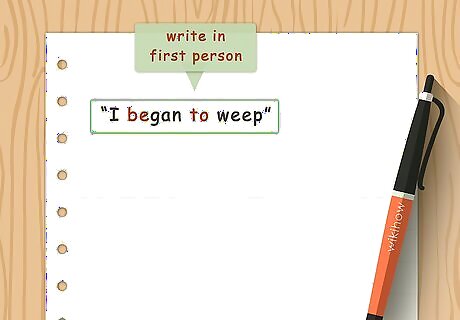
Use the first person point of view. Tanka poems are always written from the perspective of the poet. Use “I” to describe your feelings and emotions about the subject. Paint a picture of your experience for the reader from your point of view. For example, you may have a line like, “I leapt off the apple tree” or “I began to weep.”
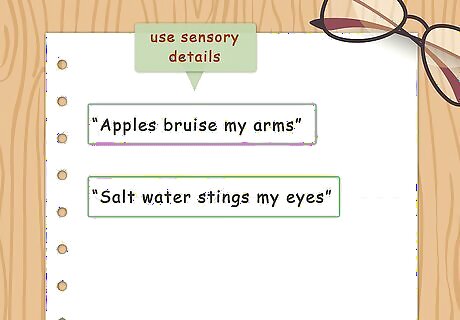
Include sensory details. The poem should describe the subject using sensory details like sound, taste, smell, touch, and sight. Describe the subject using the senses so the reader is immersed in the poem. For example, you may write, “Apples bruise my arms” or “Salt water stings my eyes.”
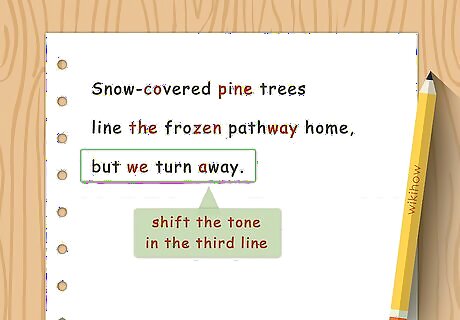
Have a pivot or turn in the third line. A good tanka poem will start with two lines that describe what the poet experiences. The third line should then shift the tone of the poem, reflecting back on the first two lines. For example, you may have lines like: Line 1: I leapt off the apple tree Line 2: Into the fresh water lake Line 3: I am nothing now
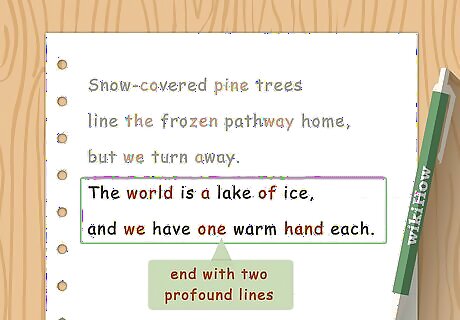
End with two profound lines. The last two lines of the tanka poem should present a deep reflection or thought to the reader. The final lines should leave the reader with a strong emotion or feeling. Often, tanka poems end on a slightly sad or bittersweet note. For example: Line 1: I leapt off the apple tree Line 2: Into the fresh water lake Line 3: I am nothing now Line 4: Without you and your sweet look Line 5: I swallow water and try
Polishing the Tanka

Read the tanka poem aloud. Once you have completed a draft of the poem, read it out loud to yourself and listen to how it sounds. Notice if the poem adheres to the line and syllable scheme. Check that the poem flows well and has deep meaning, especially in the last two lines. Underline any awkward lines so you can revise them later.

Show the tanka poem to others. Ask friends, family, and peers to read the tanka poem. Get feedback from them on the content of the poem. Ask them if they feel deep emotion or are moved by your poem. You can also show the poem to a writing group or a poetry group, if you are part of one.
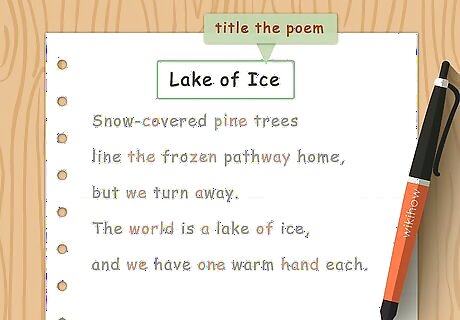
Title the poem, if you’d like. Traditionally, tanka poems are not titled. However, you can add a title to your poem, if you’d like. Pick a title that is simple and short. You can include the word “tanka” in the title. For example, you may title a tanka poem, “Tanka: Apples” or “By the Lake.”




















Comments
0 comment